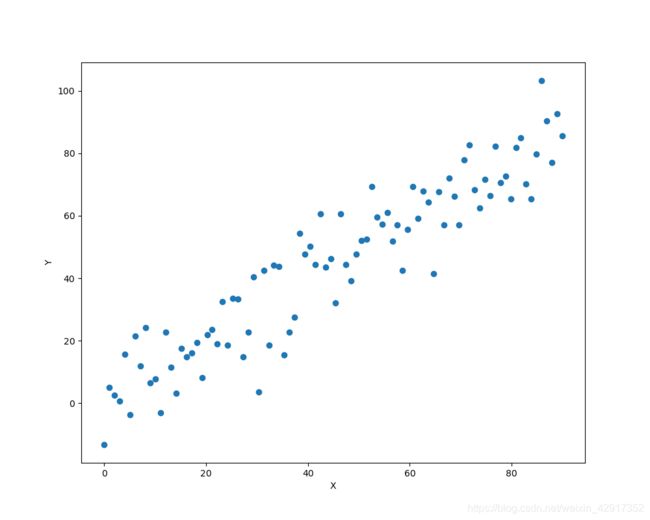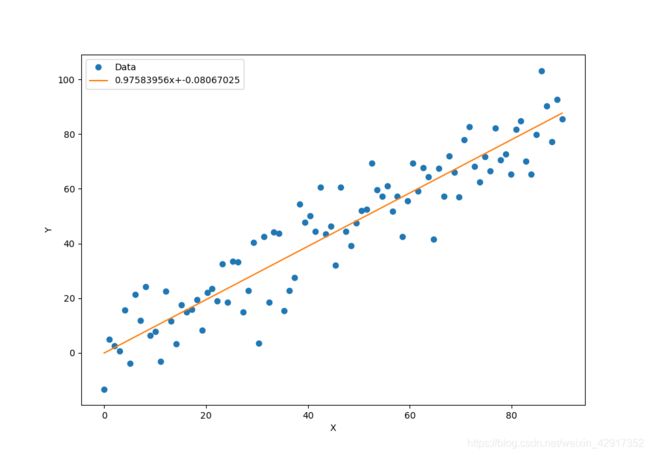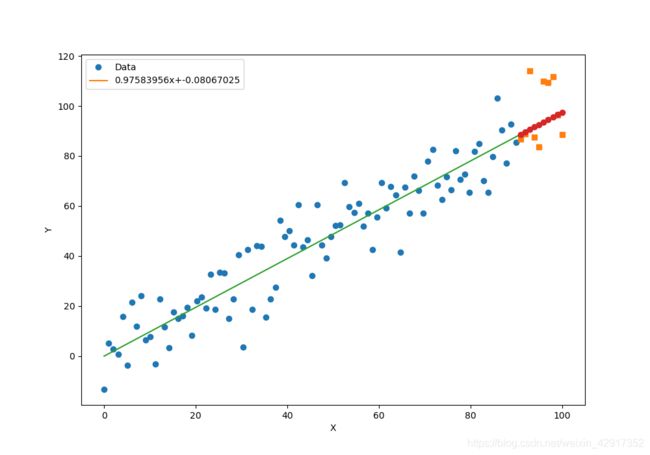深度学习之Pytorch实现房价预测
- 废话不多说
- 准备数据
# 为实验准备数据
def init_data():
x = torch.FloatTensor(torch.linspace(0, 100))
y = x + torch.FloatTensor(torch.randn(100)) * 10
return x, y
def train_test_split(x, y, radio=0.1):
assert len(x) == len(y), "length of x is not equal to y"
size = int(len(x) * radio)
# print(size)
# print(x.shape)
x_train, x_test = x[:(len(x) - size)], x[(len(x) - size):]
y_train, y_test = y[:(len(y) - size)], y[(len(y) - size):]
return x_train, x_test, y_train, y_test
训练数据可视化
def plot(x_train, y_train):
plt.figure(figsize=(10,8))
plt.plot(x_train.data.numpy(),y_train.data.numpy(),'o')
plt.xlabel("X")
plt.ylabel("Y")
plt.show()
- 来来来你想要的梯度下降法
x, y = init_data()
print(x.shape)
x_train, x_test, y_train, y_test = train_test_split(x, y)
plot(x_train,y_train)
w = torch.nn.Parameter(torch.randn(1))
b = torch.nn.Parameter(torch.randn(1))
learn_rate = 0.0001
# print(len(x_train))
# print(len(x_test))
for i in range(1000):
pred = w.expand_as(x_train)*x_train+b.expand_as(x_train)
loss = torch.mean((pred-y_train)**2)
print(loss)
loss.backward()
w.data.add_(-learn_rate*w.grad.data)
b.data.add_(-learn_rate*b.grad.data)
w.grad.data.zero_()
b.grad.data.zero_()
x_data = x_train.data.numpy()
plt.figure(figsize=(10,7))
xplot, = plt.plot(x_data,y_train.data.numpy(),'o')
yplot, = plt.plot(x_data,w.data.numpy()*x_data+b.data.numpy())
plt.xlabel("X")
plt.ylabel("Y")
str1 = str(w.data.numpy()[0])+'x+'+str(b.data.numpy()[0])
plt.legend([xplot,yplot],['Data',str1])
plt.show()
pred = w.expand_as(x_test)*x_test+b.expand_as(x_test)
print(pred)
x_data = x_train.data.numpy()
x_pred = x_test.data.numpy()
plt.figure(figsize=(10,7))
plt.plot(x_data,y_train.data.numpy(),'o')
plt.plot(x_pred,y_test.data.numpy(),'s')
x_data = np.r_[x_data,x_test.data.numpy()]
plt.plot(x_data,w.data.numpy()*x_data+b.data.numpy())
plt.plot(x_pred,w.data.numpy()*x_pred+b.data.numpy(),'o')
plt.xlabel("X")
plt.ylabel("Y")
str1 = str(w.data.numpy()[0]) + 'x+' + str(b.data.numpy()[0])
plt.legend([xplot, yplot], ['Data', str1])
plt.show()


